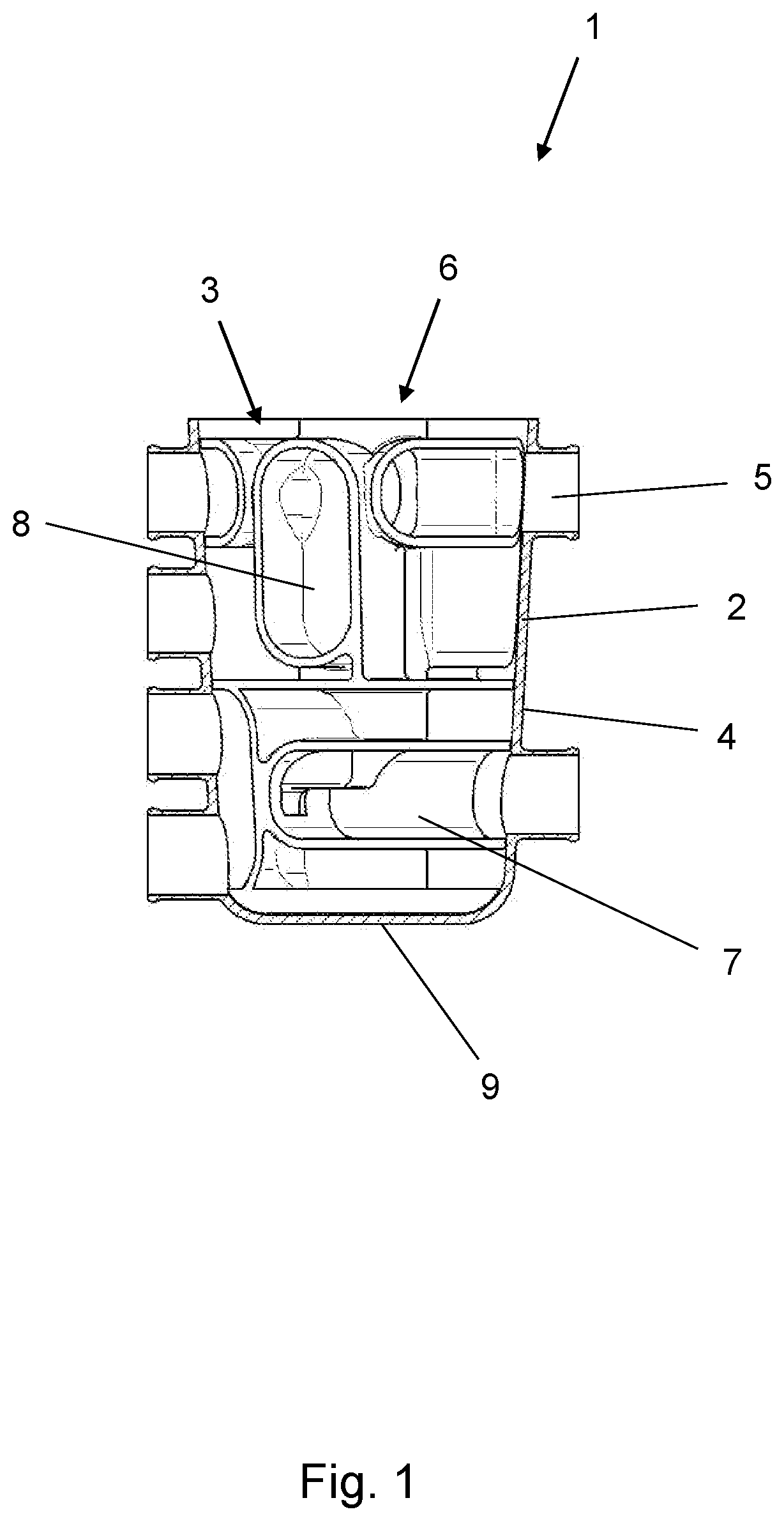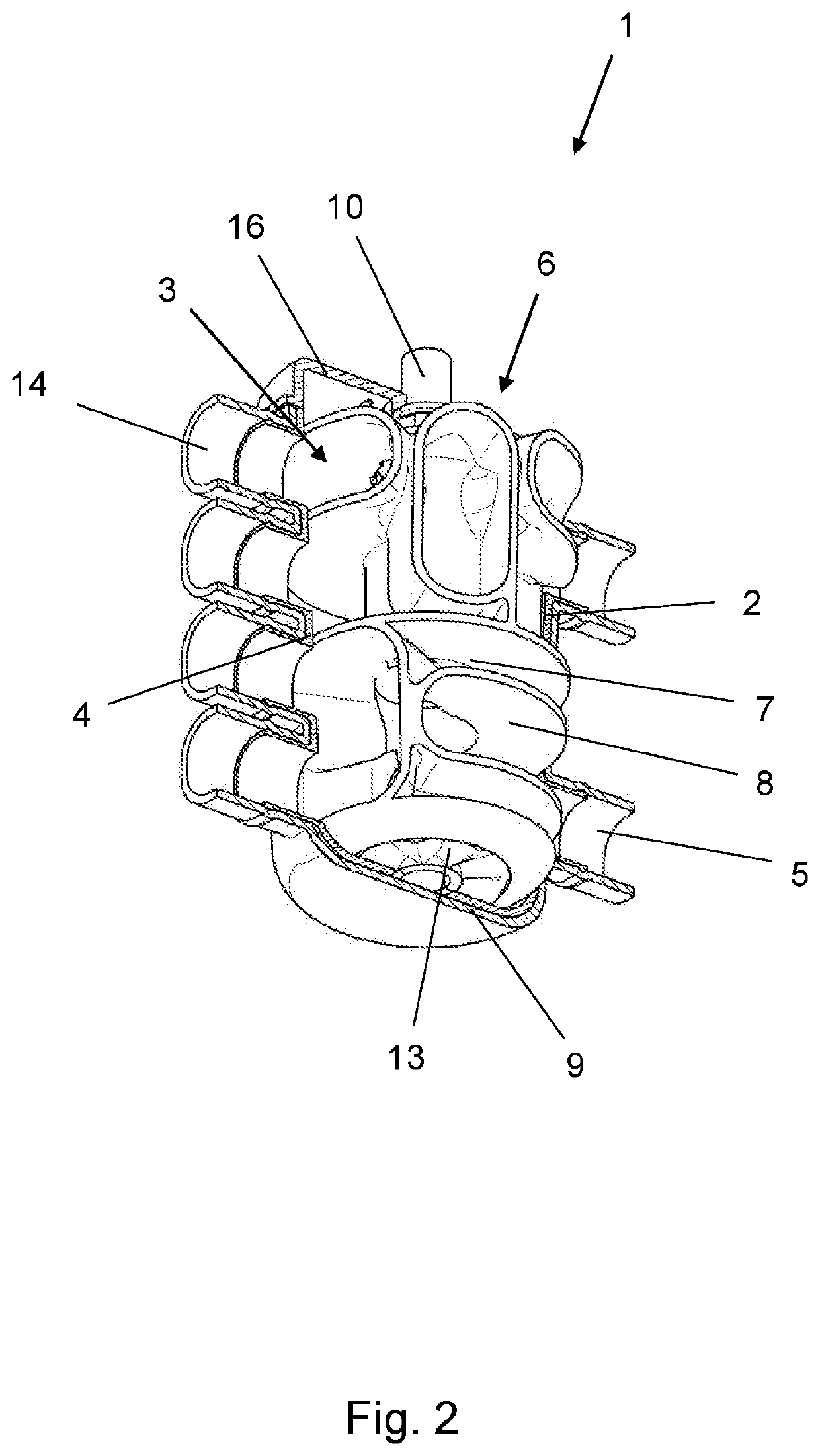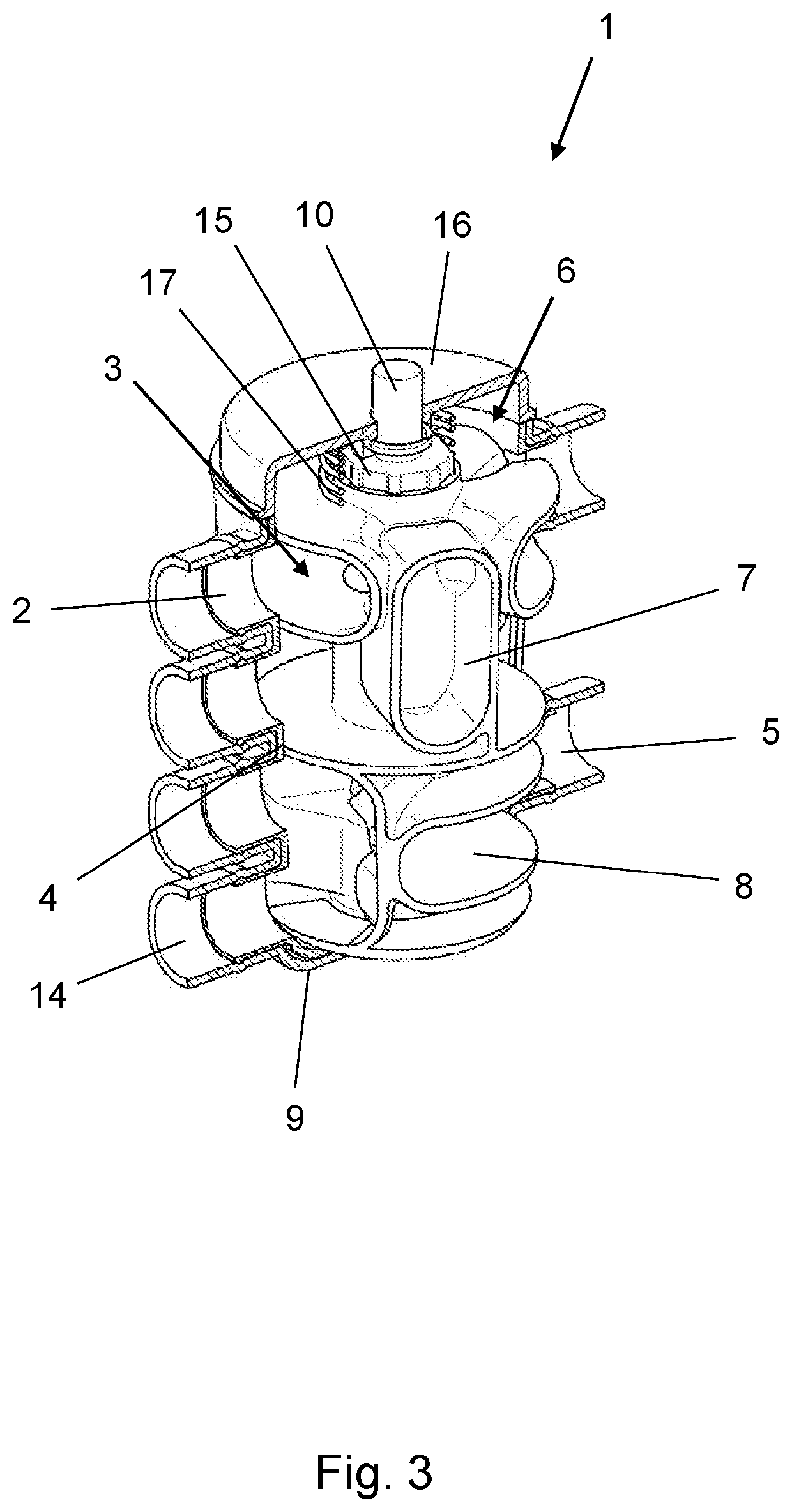Conical rotation valve
- Summary
- Abstract
- Description
- Claims
- Application Information
AI Technical Summary
Benefits of technology
Problems solved by technology
Method used
Image
Examples
first embodiment
[0046]FIG. 1 shows a sectional view of the rotary valve 1 according to a From FIG. 1, it can be seen that the valve chamber 3 is formed in a conical shape. The valve core 7 is congruent with the valve chamber 3 on the outer circumference side and is thus also conical in shape. The valve chamber 3 is delimited by the chamber wall 4 and a chamber bottom 9. The chamber wall 4 surrounds the valve core 7, wherein the diameter of the chamber wall 4 widens, starting from the chamber bottom 9, in the direction of the receiving opening 6. To adjust the valve core 7 and to rotate the channel structure 8 relative to the fluid openings 5, the valve core can be moved both translationally and rotationally relative to the valve housing 2. In this case, an actuator can be brought into engagement with the valve core 7, which performs a superimposed rotational and translational movement. The translational movement creates a gap between the valve housing 2 and the valve core 7, which allows the valve...
second embodiment
[0047]FIG. 2 shows a sectional view of the rotary valve 1 according to a In the design according to FIG. 2, the valve chamber 3 is also formed in a conical shape. The valve core 7 is congruent with the valve chamber 3 on the outer circumference side and is thus also conical in shape. The valve chamber 3 is delimited by the chamber wall 4 and a chamber bottom 9. The chamber wall 4 surrounds the valve core 7, wherein the diameter of the chamber wall 4 widens, starting from the chamber bottom 9, in the direction of the receiving opening 6.
[0048]The valve core 7 is supported both rotationally and translationally in the valve chamber 3. To adjust the valve core 7 and to rotate the channel structure 8 relative to the fluid openings 5, the valve core can be moved both translationally and rotationally relative to the valve housing 2.
[0049]In the present embodiment, however, only one actuator is required, which merely executes a rotational movement. To ensure that the valve core 7 simultane...
third embodiment
[0053]FIG. 6 shows a sectional view of the rotary valve 1 according to a In the design according to FIG. 6, the valve chamber 3 is also formed in a conical shape. The valve core 7 is congruent with the valve chamber 3 on the outer circumference side and is thus also conical in shape. The valve chamber 3 is delimited by the chamber wall 4 and a chamber bottom 9. The chamber wall 4 surrounds the valve core 7, wherein the diameter of the chamber wall 4 widens, starting from the chamber bottom 9, in the direction of the receiving opening 6.
[0054]The valve core 7 is supported both rotationally and translationally in the valve chamber 3. To adjust the valve core 7 and to rotate the channel structure 8 relative to the fluid openings 5, the valve core can be moved both translationally and rotationally relative to the valve housing 2.
[0055]In the present embodiment, however, only one actuator is required, which only executes a translational movement.
[0056]A bore extending in the axial direc...
PUM
 Login to View More
Login to View More Abstract
Description
Claims
Application Information
 Login to View More
Login to View More - R&D
- Intellectual Property
- Life Sciences
- Materials
- Tech Scout
- Unparalleled Data Quality
- Higher Quality Content
- 60% Fewer Hallucinations
Browse by: Latest US Patents, China's latest patents, Technical Efficacy Thesaurus, Application Domain, Technology Topic, Popular Technical Reports.
© 2025 PatSnap. All rights reserved.Legal|Privacy policy|Modern Slavery Act Transparency Statement|Sitemap|About US| Contact US: help@patsnap.com



